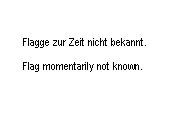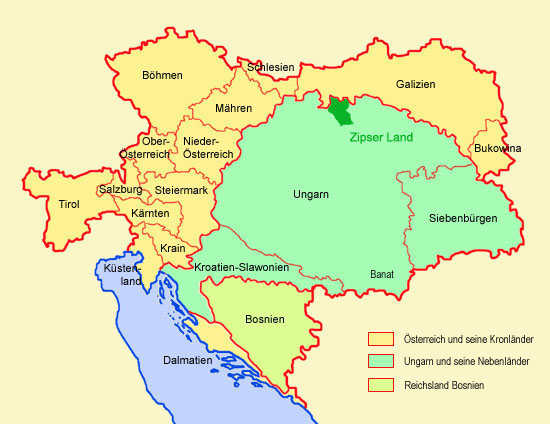 Geschichte: Geschichte: |
ca. 1050
· Eroberung durch das Königreich Ungarn
12. Jahrhundert · Bildung des Comitats Zips
1242 · Mongoleneinfall, das Land wird verwüstet, in den Folgejahren
werden durch den ungarischen König deutsche Bergleute und Siedler (aus Schlesien, Sachsen
und Thüringen) ins Land gerufen, Gründung zahlreicher Städte und Gemeinden, Gründung
des Bundes der 24 Zipser Städte
1412 · der Bund der 24 Zipser Städte wird aufgelöst, 13 von ihnen an
Polen verpfändet, die übrigen erleben einen wirtschaftlichen Niedergang
1772 · Erste polnische Teilung, die 13 Städte kommen zurück an Ungarn
1919 · im Zuge der Auflösung Österreich-Ungarns kommt das Zipser Land
an die Tschechoslowakei, Polen besetzt 195 km² des Zipser Lands
1923 · das Zipser Land wird in angerenzenden Bezirken aufgeteilt
1939–1945 · das ehemalige Zipser Land ist Bestandteil der
unabhängigen Slowakei
1944–1945 · Zweiter Weltkrieg, Flucht der vor allem deutschen
Einwohnerschaft vor der Roten Armee, die nach Kriegsende meist zurückkehren
1946 · Vertreibung und Aussiedlung der deutschen und ungarischen
Bevölkerung, ca. 1000 Deutsche verblieben bis heute in der Region |
 |
 |
 |
 History: History: |
about 1050
· conquest by the Kingdom of Hungary
12th century · formation of the Comitate of Zips
1242 · Mongol invasion, the country is devastated, in the following
years were German miners and settlers (from Silesia, Saxony and Thuringia) were brought
into the country by the Hungarian king, founding of numerous towns and cities, establish
of the 24 Federal Zips Cities
1412 · the confederation of the 24 Federal Zips Cities becomes
resolved, 13 of them become pledged to Poland, the remaining cities come in economic
decline
1772 · First Partition of Poland, the 13 cities come back to Hungary
1919 · on the occasion of the dissolution of Austria-Hungary, Zips
Country comes to Czechoslovakia, Poland occupies 75 square miles of Zips Country
1923 · Zips Country becomes divided between bordering districts
1939–1945 · former Zips Country becomes a part of the independent
Slovakia
1944–1945 · Second World War, flight of the mostly German
population, from the Red Army, they mostly returned after the war
1946 · expulsion and deportation of the German and Hungarian population,
about 1000 Germans remain until today in the region |
| Quelle/Source: Wikipedia (D), Volker Preuß |
 |



